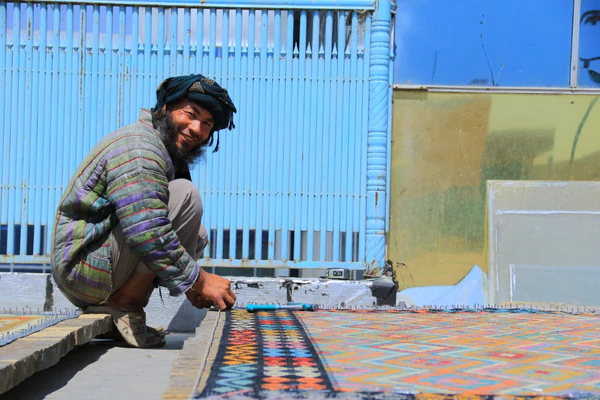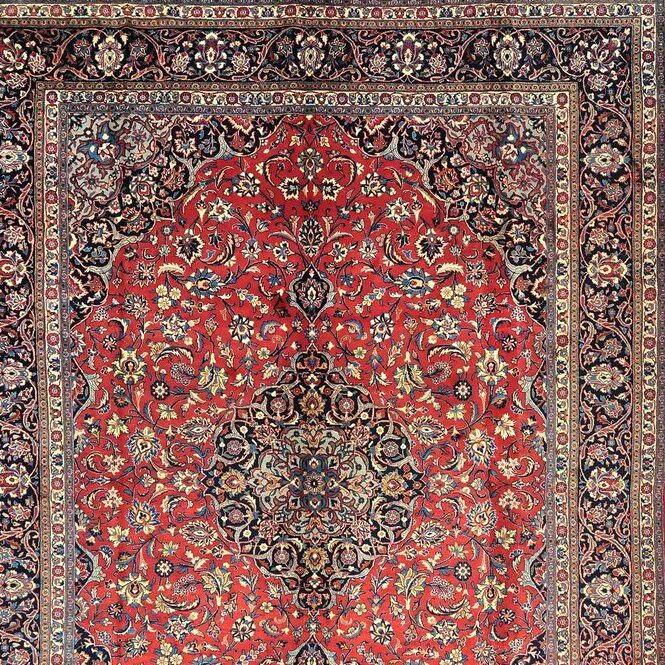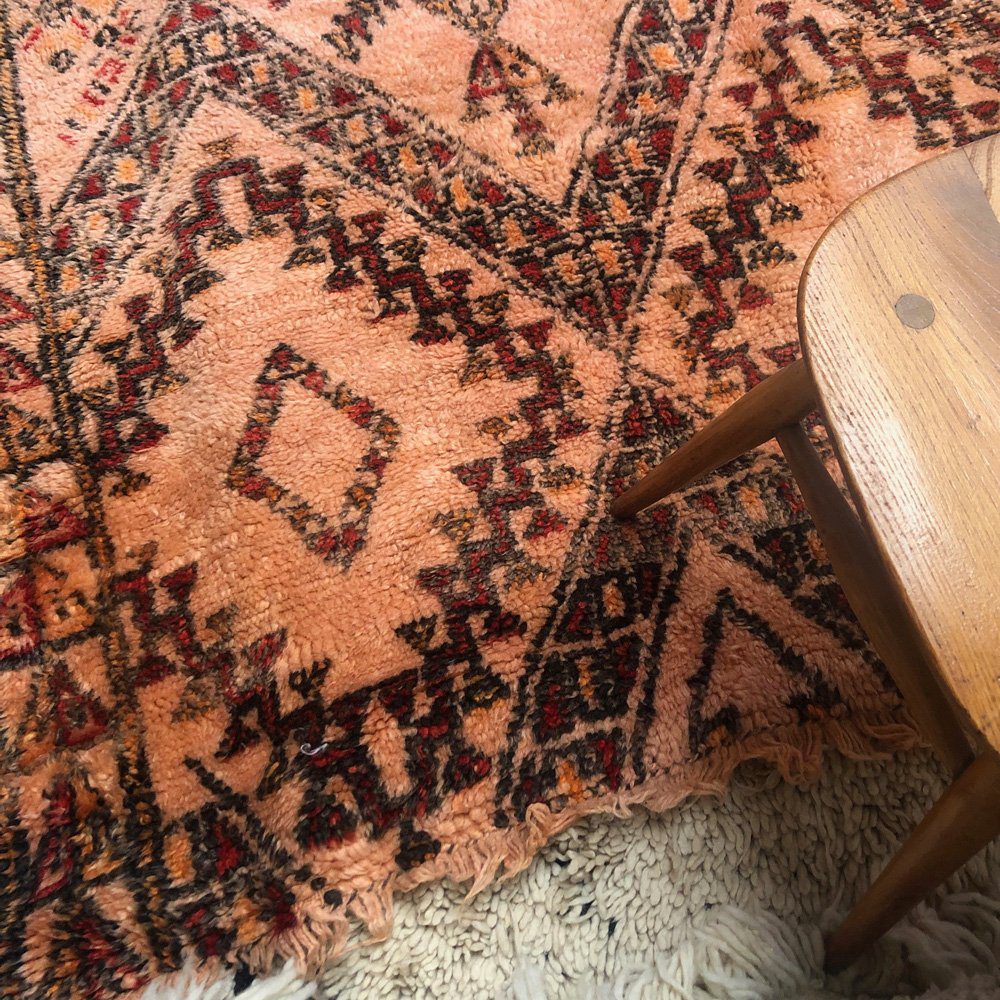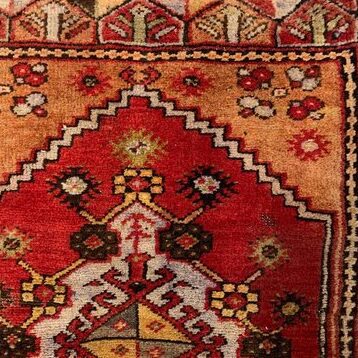The Art and Heritage of Afghan Rugs
Afghan rugs, an emblem of rich cultural history and artistry, stand as a testament to the skilled craftsmanship of Afghan weavers. Rooted in centuries-old traditions, these rugs are woven with intricate designs, each telling a unique story of the Afghan way of life. The craftsmanship of Afghan rugs is a skill passed down through generations, embedded deeply in the country's artistic heritage.
From the bustling markets of Kabul to the remote villages, the art of Afghan rug weaving showcases a diverse range of styles and patterns. Each rug is a blend of local traditions, tribal stories, and the personal touch of the weaver. Known for their durability and timeless designs, Afghan rugs are typically characterized by deep reds and blues, geometric patterns, and symbolic motifs. They are not just a piece of decor but a symbol of Afghan identity and pride.

One of the most iconic types is the Afghan War Rug, born out of conflict and turmoil. These rugs uniquely capture the socio-political history of Afghanistan, depicting everything from tanks and guns to maps and leaders, making them poignant historical artifacts. The creation of an Afghan rug, from dyeing the wool to the final knot, is a meticulous and time-intensive process, often reflecting the harsh yet beautiful landscape of Afghanistan.
Traditional Afghan Carpets: A Cultural Legacy
The traditional Afghan carpet is a magnificent representation of Afghan heritage, mirroring the region's rich cultural tapestry. These carpets are much more than simple floor coverings; they are an integral part of Afghan culture and storytelling. Crafted using age-old techniques, Afghan carpets are distinguished by their robustness, distinctive patterns, and vibrant colours.
Each carpet is a work of art, intricately handwoven, often in remote villages, by skilled artisans who have inherited their weaving skills from their ancestors. The designs are deeply symbolic, with each pattern, colour, and knot carrying a piece of Afghan history and tradition. These carpets often feature repeating geometric patterns, tribal motifs, and a classic colour palette dominated by rich reds and navy blues.
Afghan carpets are made from high-quality wool, known for its durability and softness. The wool is hand-spun, dyed with natural colours, and then intricately woven into beautiful designs on traditional looms. The resulting carpets are highly valued for their craftsmanship, durability, and beauty, often serving as cherished family heirlooms passed down through generations. In the global market, Afghan carpets are sought after for their authenticity, craftsmanship, and the timeless beauty they bring to any space.
Herati Rugs: Symbolism and Design
Herati rugs, named after the city of Herat in Afghanistan, are among the most recognized and celebrated styles in Afghan rug making. These rugs are known for their distinctive patterns, often featuring a central floral motif surrounded by curving leaves, sometimes referred to as the 'fish pattern.' This design is not only aesthetically pleasing but also rich in symbolism, representing life, prosperity, and the cyclical nature of existence.
The craftsmanship involved in creating a Herati rug is a meticulous process, reflecting the artistry and precision of Afghan weavers. The rugs are typically woven with fine wool, dyed with natural colours to create a vibrant yet harmonious palette. The complexity of the patterns in Herati rugs requires a high knot density, making these rugs particularly durable and long-lasting.
Herati rugs are highly sought after by collectors and enthusiasts, not only for their beauty but also for their cultural significance. Each rug is a piece of Afghan history, telling a story through its patterns and colours. The Herati rug is not just a decorative item; it's an embodiment of Afghan heritage and a testament to the skill of its people.
Afghan War Rugs: Art from Conflict
Afghan war rugs are a unique and powerful form of artistic expression that emerged during the conflicts in Afghanistan. These rugs integrate traditional Afghan designs with motifs and imagery from modern warfare, creating a striking juxtaposition between culture and conflict. The imagery depicted in these rugs often includes tanks, guns, helicopters, and maps, reflecting the reality of life in a war-torn country.
The emergence of war rugs can be traced back to the 1980s, during the Soviet invasion of Afghanistan. The weavers began incorporating contemporary military and political symbols into their rugs, turning them into narratives of their experiences and the impact of war on Afghan society. These rugs not only serve as a form of documentation but also as a poignant commentary on the effects of war.
Today, Afghan war rugs are valued both as works of art and as historical artefacts. They are sought after by collectors worldwide, not only for their unique aesthetic, but also for the stories they tell. Each war rug is a testament to the resilience and creativity of the Afghan people, transforming the harsh realities of conflict into a form of artistic expression.
Elegance in Longevity: Afghan Runner Rugs
Afghan runner rugs, renowned for their durability and elegance, are a testament to the enduring craftsmanship of Afghan weavers. These narrow and long rugs are perfect for hallways, corridors, and other elongated spaces, offering both functionality and aesthetic appeal. The runner rugs, often showcasing the traditional designs of Afghan rug-making, are characterized by their geometric patterns and vibrant colour schemes.
The beauty of Afghan runner rugs lies in their versatility. They seamlessly blend into various interior designs, from traditional to contemporary, adding warmth and texture to any space. The designs of these rugs are often inspired by the tribal and nomadic lifestyles of the Afghan people, with motifs that tell stories of their history and everyday life.
In terms of construction, Afghan runner rugs are predominantly made from wool, known for its durability and resilience. This makes them particularly suited for high-traffic areas, where they can withstand wear and tear while maintaining their visual appeal. The use of natural dyes ensures that the colours remain vibrant over time, adding to their longevity. The Afghan runner rug is not just a decorative item; it's a functional piece of art that brings a piece of Afghan heritage into homes around the world.
Joe Rugs - Carpet Expert
Hello! I'm Joseph Rugs, the founder of CarpetJoe.com and your guide through the intricate world of carpets. Born and raised in London with a deep-rooted passion for art and culture, I've explored the globe to bring the rich tapestry of carpet weaving right to your screen. My academic background in arts and humanities from Oxford has fueled my curiosity, leading me to uncover the stories behind every knot and weave. As a family man, my adventures are shared with my loved ones, enriching our lives with every piece of art we encounter. Join me as we explore the beauty and craftsmanship of carpets together.
The Vibrancy of Red Afghan Rugs
Red Afghan rugs are celebrated for their vibrant hues and intricate designs, making them a sought-after item in the world of handmade carpets. The colour red in Afghan rugs is more than just an aesthetic choice; it holds deep cultural and symbolic significance, often representing strength, courage, and happiness. These rugs, typically featuring deep reds and burgundies, are a visual representation of the rich Afghan culture.
The red colour in these rugs is achieved through traditional dyeing techniques, using natural ingredients such as madder root. This not only gives the rugs their distinctive colour but also ensures that the colour remains vibrant for years. The designs of red Afghan rugs are usually a blend of tribal and geometric patterns, each carrying a story or symbolizing a traditional belief.
In interior design, red Afghan rugs are used to add warmth and character to a space. They work well as focal points in a room, bringing energy and dynamism to the decor. Despite their traditional origins, these rugs fit perfectly in modern settings, providing a contrast that enhances the overall aesthetic of a room. The red Afghan rug is more than a decorative piece; it is a celebration of Afghan artistry and a symbol of the enduring beauty of Afghan rug-making.
Preserving History: Antique Afghan Rugs
Antique Afghan rugs are revered for their historical significance and exquisite craftsmanship. These rugs, often several decades or centuries old, represent the rich weaving heritage of Afghanistan. Each antique rug is a unique piece, reflecting the artistry and history of the region where it was created.
Characterized by traditional designs, natural dyes, and hand-spun wool, antique Afghan rugs are highly sought after by collectors and connoisseurs worldwide. Their value lies not only in their age but also in their intricate designs, quality of materials, and the stories they embody. These rugs often feature complex geometric patterns, deep, rich colours, and symbolic motifs that narrate tales of the weavers' lives and their environment.
Preserving antique Afghan rugs is crucial for maintaining their beauty and integrity. Proper care includes gentle cleaning, avoiding exposure to direct sunlight, and handling them with care to prevent damage. For many, these rugs are not just decorative items but cultural artefacts that connect the past with the present, keeping the legacy of Afghan rug-making alive.
Shindand or Adraskan Rugs: Afghanistan's Pride
Shindand or Adraskan rugs, originating from specific regions in Afghanistan, are renowned for their distinctive styles and cultural significance. These rugs are a symbol of Afghan pride and craftsmanship, showcasing the skill and creativity of Afghan weavers.
Known for their robust construction and vibrant colours, Shindand or Adraskan rugs often feature bold, geometric patterns that are deeply symbolic. These designs are reflective of the rich tribal heritage of the region and are influenced by the natural landscape and local traditions. The rugs are typically made from high-quality wool, which is dyed using natural substances, giving them a unique and vivid color palette.
In the global market, Shindand or Adraskan rugs are admired for their beauty and durability. They are sought after by collectors and enthusiasts who appreciate their artistic value and cultural significance. These rugs not only add aesthetic appeal to any space but also tell a story of Afghan history, art, and tradition, making them more than just a floor covering but a piece of cultural heritage.
Common Types or Rugs
Each type of Oriental rug has its unique charm and story, making them more than just a luxury item; they are a piece of their country's cultural legacy. Collectors and enthusiasts of Oriental and Persian rugs appreciate them not only for their aesthetic appeal but also for their cultural, historical, and artistic significance.

Persian Rugs
Originating from what is now modern-day Iran, Persian rugs are celebrated for their unparalleled craftsmanship and enduring beauty.

Berber Rugs
Originating from the Berber tribes of North Africa, particularly Morocco, this type of carpet is renowned for its rugged texture and resilient nature.

Turkish Rugs
Turkish rugs have a legacy steeped in history and artistry, and have always been a symbol of exquisite craftsmanship and cultural significance.
Frequently Asked Questions
The value of Afghan rugs varies greatly depending on factors like age, craftsmanship, material, and condition. Antique Afghan rugs, especially those that are well-preserved and have unique designs, can be quite valuable, often fetching high prices in markets and auctions. Newer rugs, while generally less expensive, can still be valuable based on their quality and the intricacy of their designs.
Cleaning Afghan rugs requires gentle care to preserve their colors and fabric. Regular vacuuming is recommended, and for spills, blot immediately with a clean, dry cloth. Avoid harsh chemicals and consider professional cleaning for serious stains or annual deep cleaning, as improper handling can damage these delicate rugs.
Afghan rugs are often expensive due to their intricate handcrafting process, quality materials, and cultural significance. The time-intensive and skilled art of hand-knotting, along with the use of high-quality wool and natural dyes, contribute to the cost. Their uniqueness and artistry also play a significant role in their valuation.

